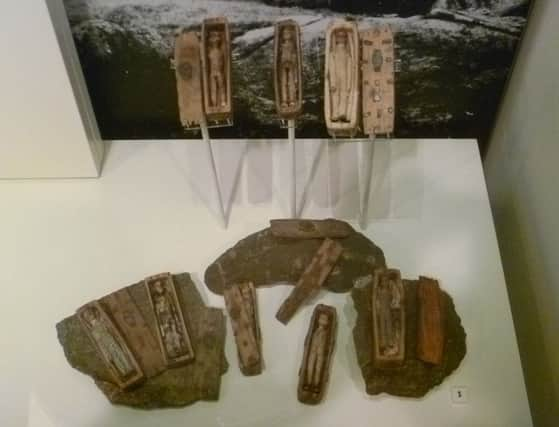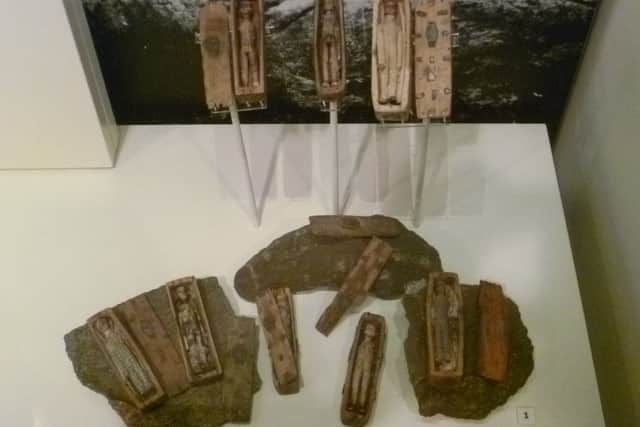National Museum of Scotland’s ‘Halloween’ exhibits


Arthur’s Seat Coffins
In June 1836, 17 concealed miniature coffins were discovered by a group of schoolboys in a cave on Arthur’s Seat. Their exact origin and purpose remains a mystery.
The coffins had lain undisturbed for an uncertain amount of time, believed to be around five-six years. When the boys uncovered them, they were neatly laid out in three tiers.
Advertisement
Hide Ad

Despite a number of the figures ending up badly damaged or lost altogether, a few survived and were eventually purchased by a private collector who donated them to the museum in 1901.
In the video, George talks us through what the figures, of which eight remain, might represent.
The Mortsafe
A mortsafe was a heavy, metal lockable coffin designed to keep resurrectionists (or ‘body snatchers’) from digging up freshly buried corpses in thew 19th century.
However, it is still possible to see some stone mortsafes in Scotland’s graveyards which performed a similar role - essentially preventing the body snatchers from getting to the body interred in the grave.
George explains more about the mortsafe in our video.